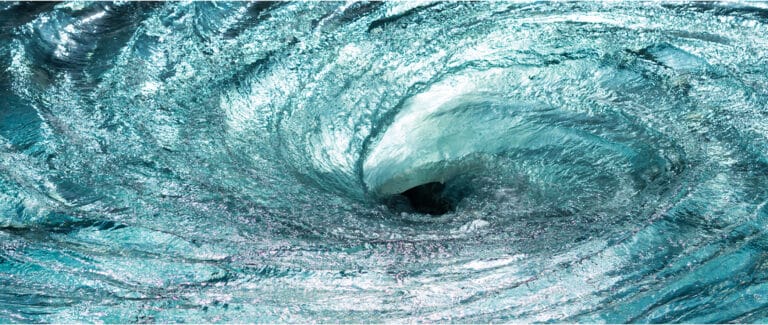
The pure carbon/silver technology and its powder have been patented
For a long time, various scientists have tried the carbon-silver combination, wanting to take advantage of the marvelous filtration properties of activated carbon for water treatment, while freeing themselves from the problems of bacterial contamination through the presence of silver, which has bacteriostatic effects. The bacteriostatic properties of silver (and other heavy metals) have been known since ancient times, as we know that the Romans liked to keep their water in silver jars.
As science progressed, it was possible to imagine combining the properties of these two materials.
The various methods that existed before the carbon/pure silver were based on chemical impregnation methods, which prevented their use for water purification because of the high release of silver due to the instability of the product (weakness of the bond between the carbon and the silver salts: Van der Waal type interaction) and the presence of the various components of the chemical bath that allowed the product to be obtained.
This is important because, in the case of an application aimed at making the water drinkable, the interest of using a porous support as a filter lies in the fact that the pores will trap the various polluting elements contained in the water to be treated, thus becoming an ideal site for bacterial proliferation.
The CARBON/PURE SILVER process allows the metallization, without the use of “chemical baths”, of both the external and internal surfaces in a modular way, allowing the deposition of a metallic layer also in the pores of the support, thus avoiding the proliferation of bacteria.
Numerous leaching tests have been carried out on Oleo products, none of which have shown a quantifiable trace of silver leaching. CARBON/PURE SILVER claims strong covalent Ag-support bonds. The bonds that characterize the chemical method are more like Van der Waal type interactions and are therefore weak in nature.
As far as our metallization process is concerned, after a thorough physicochemical analysis, it appears that silver is deposited in its purest metallic form, Ag0 (the deposition process will not have induced any oxidation of the metal, unlike other processes), which guarantees an excellent reactivity in water. On the other hand, the different oxidized states of carbon (e.g. C-O, C=O, …) play a beneficial role in water treatment.
The XPS analyses allowed us to confirm the formation of silver carbides generated by our plasma treatment. They testify to the exceptional stability of the product, which goes beyond the usual framework of bonds between two elements!
What is persistence?
Persistence is the ability of water to remain unpolluted after treatment. When we talk about persistence, we mean the following experimental process: The water treated by our process is collected in a container and left in the open air for a few days. After this period, we take a sample of this water and subject it to a series of bacteriological analyses: no pathogenic bacteria are detected (analyses certified by laboratories). It is therefore about the ability that the water treated by the process CARBON / PURE SANDS acquired after its contact with our product in a very precise parametrized way (kinetic energy,…). In fact, the calculated passage of water in the material CARBON/PURE SILVER will catalyze physico-chemical reactions which, if one is interested in the microbiological balance, will see that it will be likely to oxidize the bacteria, in particular by a reactional contribution of oxygen (as we have seen above). This bactericidal property goes beyond the simple bacteriostatic property.
The formation and the obtaining of carbides and silverides prove that, in terms of product, we obtain something other than powders or chemically impregnated materials. These properties are essential for the purification and conservation of water.
THE CARBIDE / PURE SILVER TECHNOLOGY is produced by plasma reactors.
This technology and the production of carbon/pure silver powder are key factors in the entire process.
PATENT: EP 0 979 212 B1 – PCT/IB1998/000610



